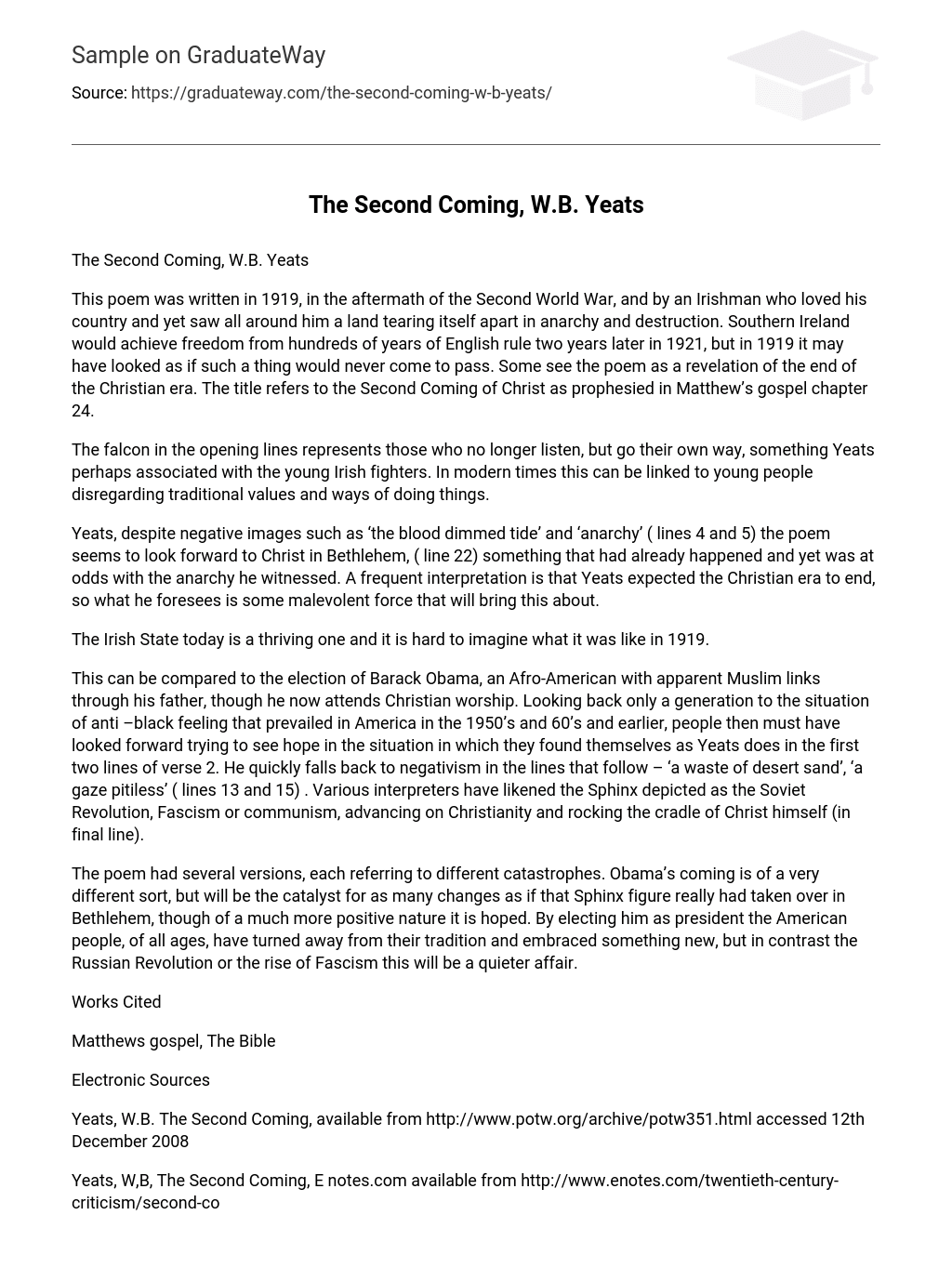This poem was written in 1919, in the aftermath of the Second World War, and by an Irishman who loved his country and yet saw all around him a land tearing itself apart in anarchy and destruction. Southern Ireland would achieve freedom from hundreds of years of English rule two years later in 1921, but in 1919 it may have looked as if such a thing would never come to pass. Some see the poem as a revelation of the end of the Christian era. The title refers to the Second Coming of Christ as prophesied in Matthew’s gospel chapter 24.
The falcon in the opening lines represents those who no longer listen, but go their own way, something Yeats perhaps associated with the young Irish fighters. In modern times this can be linked to young people disregarding traditional values and ways of doing things.
Yeats, despite negative images such as ‘the blood dimmed tide’ and ‘anarchy’ ( lines 4 and 5) the poem seems to look forward to Christ in Bethlehem, ( line 22) something that had already happened and yet was at odds with the anarchy he witnessed. A frequent interpretation is that Yeats expected the Christian era to end, so what he foresees is some malevolent force that will bring this about.
The Irish State today is a thriving one and it is hard to imagine what it was like in 1919.
This can be compared to the election of Barack Obama, an Afro-American with apparent Muslim links through his father, though he now attends Christian worship. Looking back only a generation to the situation of anti –black feeling that prevailed in America in the 1950’s and 60’s and earlier, people then must have looked forward trying to see hope in the situation in which they found themselves as Yeats does in the first two lines of verse 2. He quickly falls back to negativism in the lines that follow – ‘a waste of desert sand’, ‘a gaze pitiless’ ( lines 13 and 15) . Various interpreters have likened the Sphinx depicted as the Soviet Revolution, Fascism or communism, advancing on Christianity and rocking the cradle of Christ himself (in final line).
The poem had several versions, each referring to different catastrophes. Obama’s coming is of a very different sort, but will be the catalyst for as many changes as if that Sphinx figure really had taken over in Bethlehem, though of a much more positive nature it is hoped. By electing him as president the American people, of all ages, have turned away from their tradition and embraced something new, but in contrast the Russian Revolution or the rise of Fascism this will be a quieter affair.
Works Cited
Matthews gospel, The Bible
Electronic Sources
Yeats, W.B. The Second Coming, available from http://www.potw.org/archive/potw351.html accessed 12th December 2008
Yeats, W,B, The Second Coming, E notes.com available from http://www.enotes.com/twentieth-century-criticism/second-coming-yeats-william-butler accessed 12th December 2008





